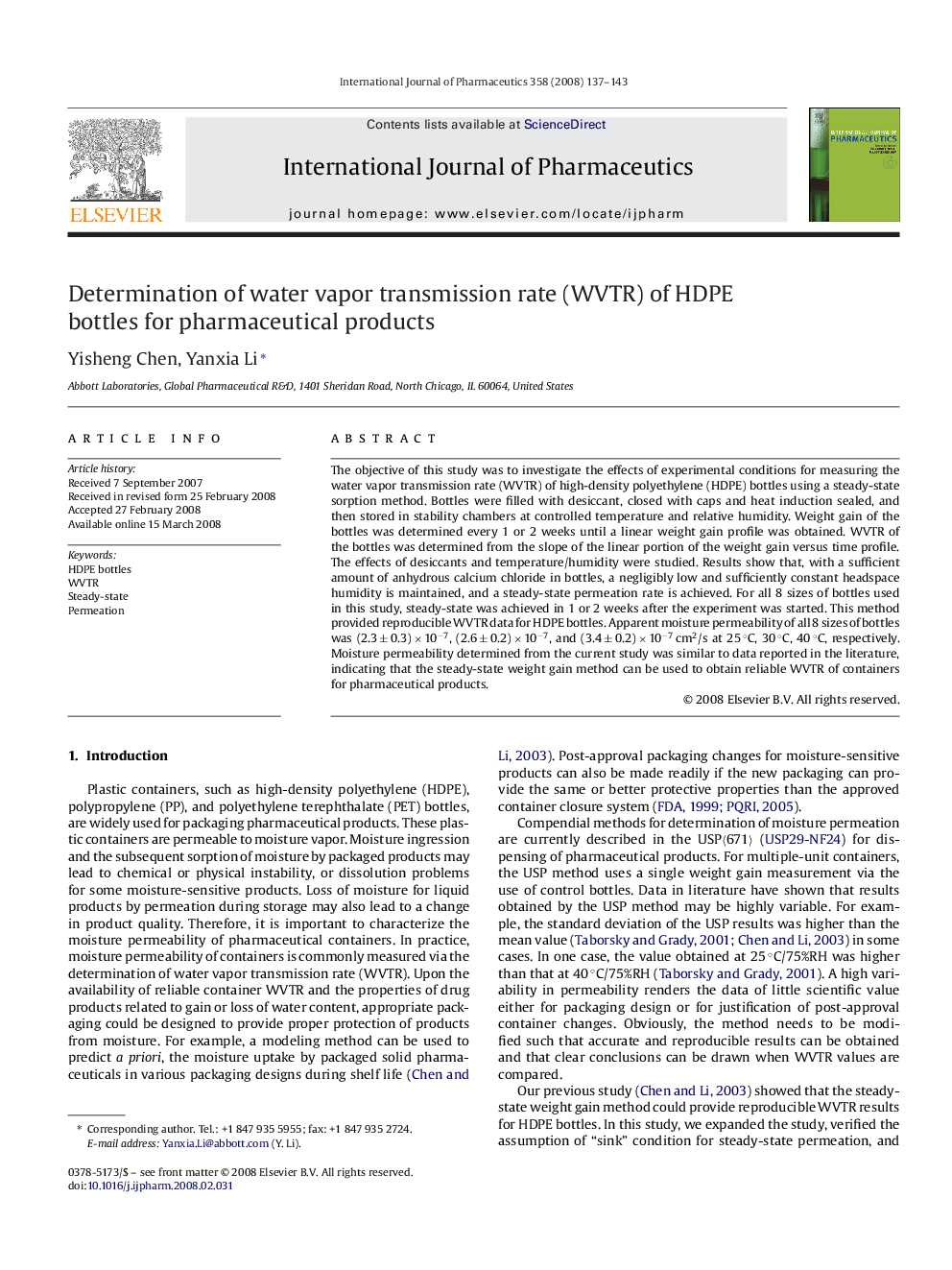| Article ID | Journal | Published Year | Pages | File Type |
|---|---|---|---|---|
| 2505392 | International Journal of Pharmaceutics | 2008 | 7 Pages |
The objective of this study was to investigate the effects of experimental conditions for measuring the water vapor transmission rate (WVTR) of high-density polyethylene (HDPE) bottles using a steady-state sorption method. Bottles were filled with desiccant, closed with caps and heat induction sealed, and then stored in stability chambers at controlled temperature and relative humidity. Weight gain of the bottles was determined every 1 or 2 weeks until a linear weight gain profile was obtained. WVTR of the bottles was determined from the slope of the linear portion of the weight gain versus time profile. The effects of desiccants and temperature/humidity were studied. Results show that, with a sufficient amount of anhydrous calcium chloride in bottles, a negligibly low and sufficiently constant headspace humidity is maintained, and a steady-state permeation rate is achieved. For all 8 sizes of bottles used in this study, steady-state was achieved in 1 or 2 weeks after the experiment was started. This method provided reproducible WVTR data for HDPE bottles. Apparent moisture permeability of all 8 sizes of bottles was (2.3 ± 0.3) × 10−7, (2.6 ± 0.2) × 10−7, and (3.4 ± 0.2) × 10−7 cm2/s at 25 °C, 30 °C, 40 °C, respectively. Moisture permeability determined from the current study was similar to data reported in the literature, indicating that the steady-state weight gain method can be used to obtain reliable WVTR of containers for pharmaceutical products.
